A design tool going public rarely commands this much attention. Figma, however, is not just any design tool.
With its anticipated IPO gaining traction across investor circles and product communities, the industry is watching with unusual interest.
This is more than a valuation story. It’s a test case for what a modern software company can become—product-first, browser-native, widely loved, and deeply embedded in team workflows.
As Figma edges toward its IPO, the implications stretch beyond design. They touch on collaboration, SaaS pricing models, and what investors now expect from growth-stage tech.
Let’s take a closer look at what’s shaping this moment.
Figma’s Origin Story Still Drives Its Appeal
Figma wasn’t built for headlines. It began as a quiet effort to make design tools more accessible, collaborative, and cloud-native.
Before Figma, real-time design collaboration didn’t scale well. Designers passed files around. Feedback cycles were slow. Version control was a challenge.
What Figma offered was immediate: a shared workspace, a browser-first approach, and tools that encouraged iteration. It built habits fast—across small startups and large product teams alike.
As the IPO approaches, this foundational story still resonates. Investors are betting not just on numbers, but on the stickiness of a product that rewired how design happens.
Adobe’s Failed Acquisition Cemented Its Position
In 2022, Adobe attempted to acquire Figma for $20 billion. The move signaled more than strategic interest. It was a defensive play, an incumbent trying to lock down a challenger.
The deal collapsed under regulatory pressure. That breakdown, though, changed how the market viewed Figma. It validated the company’s standalone potential. It also positioned Figma as one of the rare design-first firms powerful enough to spook a giant.
As the IPO draws closer, that failed deal looms large. It reframes the offering as an assertion of independence, not just a liquidity event.
The IPO Could Shift How SaaS Is Valued
Figma is not a hype engine. It avoided overreaching headlines. It stayed lean while growing. It prioritized user experience over promotional stunts.
That restraint matters now. Most SaaS companies that went public in the last cycle leaned heavily on rapid growth and speculative revenue. Many corrected hard in the public markets.
Figma’s numbers tell a different story: disciplined growth, user-driven expansion, and high retention.
If the IPO performs well, it could steer investor sentiment back toward fundamentals—product usage, net expansion rate, and platform adoption.
Pricing Strategy Set the Tone for Bottom-Up Growth
Figma’s freemium model was built for teams. It allowed broad usage without a paywall, encouraging experimentation before commitment. When adoption grew, so did willingness to pay.
This structure didn’t just support product-led growth. It created internal champions, including designers who introduced the tool to product managers, marketers, and engineers. The conversion path felt natural, not forced.
That’s a powerful model for modern SaaS. And if Figma’s IPO pricing aligns with its user growth rather than sales velocity, other startups may feel encouraged to lean into freemium again.
The Ecosystem Around Figma Expands Its Moat
Beyond its core product, Figma’s plugin ecosystem and developer integrations have made it extensible. Teams use it not only for UI design, but also for wireframing, feedback, and prototyping.
The community built tools that extended functionality far beyond what Figma shipped itself. This kind of extensibility creates surface area and defensibility. It gives the product staying power.
For investors evaluating the IPO, this matters. Growth isn’t limited by roadmap speed when the community builds alongside the company.
Collaborative Workflows Helped Figma Scale Quietly
Figma’s rise tracks a broader shift: the decentralization of product development. Cross-functional teams now design, review, and launch from shared spaces. Figma became that space.
Product managers review drafts. Engineers inspect specs. Marketers grab exports. Design is no longer a handoff; it’s a shared loop. And Figma facilitates that loop with minimal friction.
This embedded utility has helped Figma become part of the workweek rhythm. That stickiness reduces churn and improves net dollar retention; these are two metrics that public investors weigh closely.
The IPO Could Influence How Startups Pitch Design
Design is no longer downstream from engineering. It often defines the product experience from the start. Figma’s potential IPO success may underscore that shift.
Founders may now pitch design-led software companies with more confidence. Investors may listen with less skepticism. The assumption that design tools serve only a niche audience is fading fast.
Figma proves that products built for craft (when done right) can command mainstream attention and valuation.
Timing Appears Strategic, Not Reactive
The IPO window in 2025 has been narrow. Market volatility, interest rates, and macro uncertainty have kept many companies sidelined.
Figma’s decision to move forward indicates both readiness and resilience.
Unlike companies that race to market after a funding drought, Figma is entering from a position of strength. It hasn’t needed the public market to correct missteps. It’s using the moment to reinforce momentum.
That confidence, if reflected in pricing and investor demand, could reset tech IPO expectations more broadly.
Valuation Will Reflect More Than Revenue
While IPO pricing remains in flux, most observers expect a valuation near or above Adobe’s earlier acquisition offer. That’s significant.
It means Figma may go public at a valuation close to what the market rejected two years ago.
The number will spark debate. Some will question whether it’s justified. Others will point to revenue multiple comparisons across SaaS. But one thing is clear: Figma’s valuation will become a reference point for future collaboration tools.
Founders and analysts alike will study the comps.
User Trust Has Been a Quiet Advantage
Amid debates about AI integrations and enterprise licensing, one thing remains consistent: users trust Figma. Its UI hasn’t bloated. Its roadmap hasn’t been derailed. Its communication with the community has been clear.
This kind of brand equity is rare. It makes product-led expansion smoother and reduces support cost per user. It also softens backlash when things change—pricing tweaks, feature adjustments, or M&A.
For public investors assessing long-term risk, user trust can’t be quantified, but it influences everything else that can.
Final Thoughts
Figma’s IPO may not carry the flash of a consumer social network or the scale of a global platform, but its relevance runs deep.
It marks a shift in how software built for creators is perceived in public markets. A tool that focused on usability, shared access, and quiet consistency now stands to influence how future companies define readiness.
The broader takeaway is less about valuation and more about influence. Figma helped reset expectations, both for what design tools could do and for how a product-led company can grow without losing direction.
Whatever its IPO performance, the signal it sends is already clear: careful product thinking now commands market attention.




